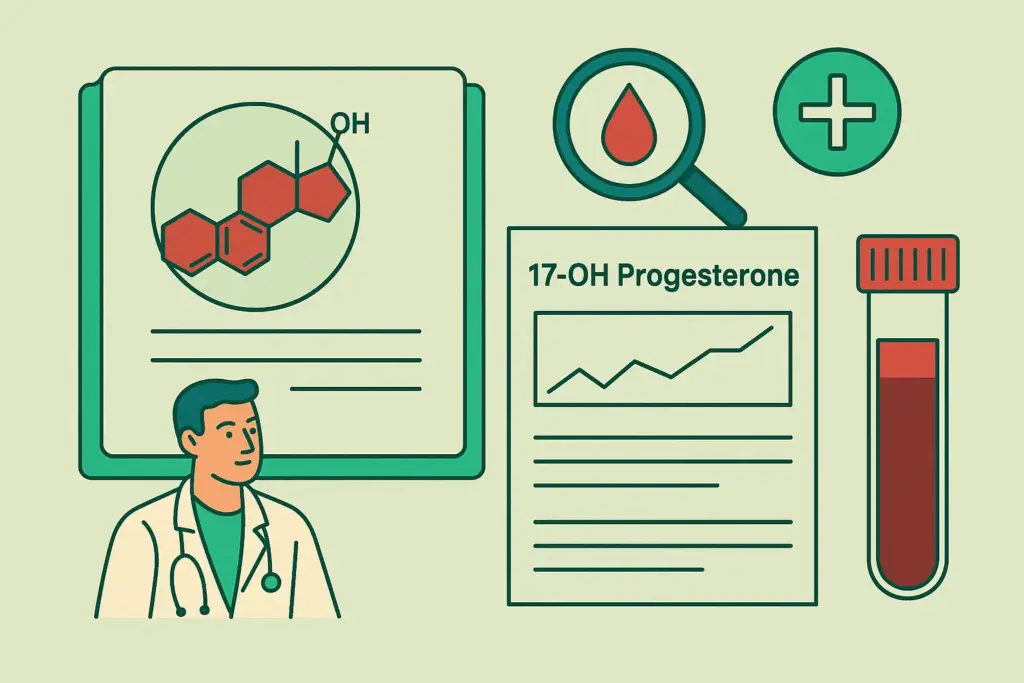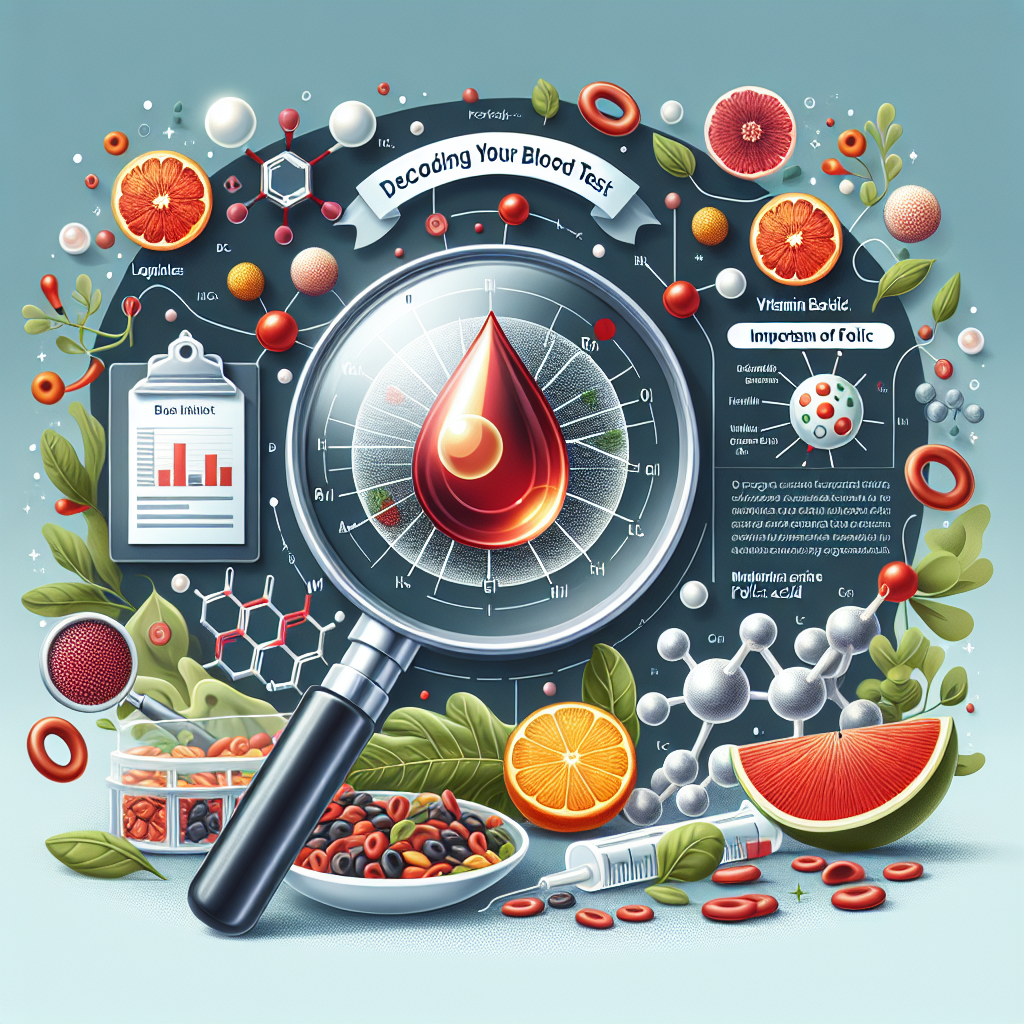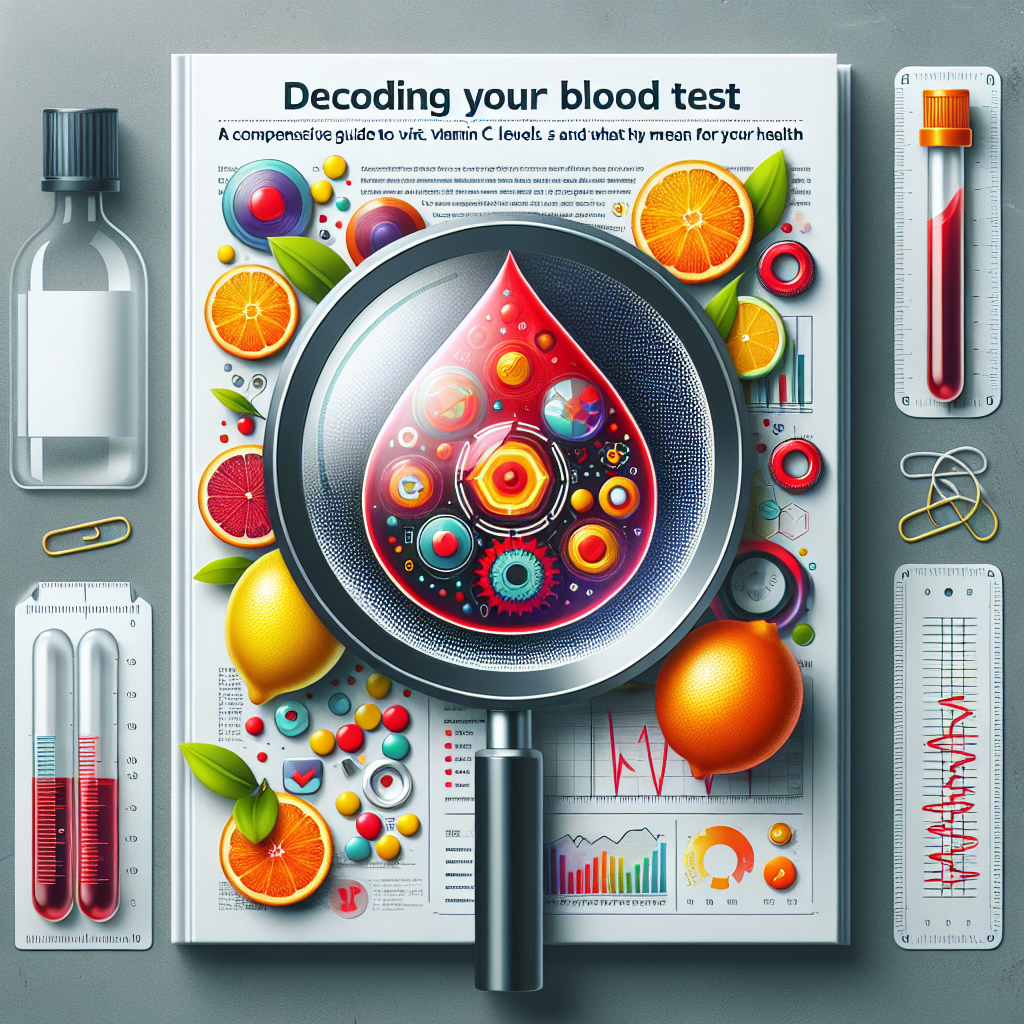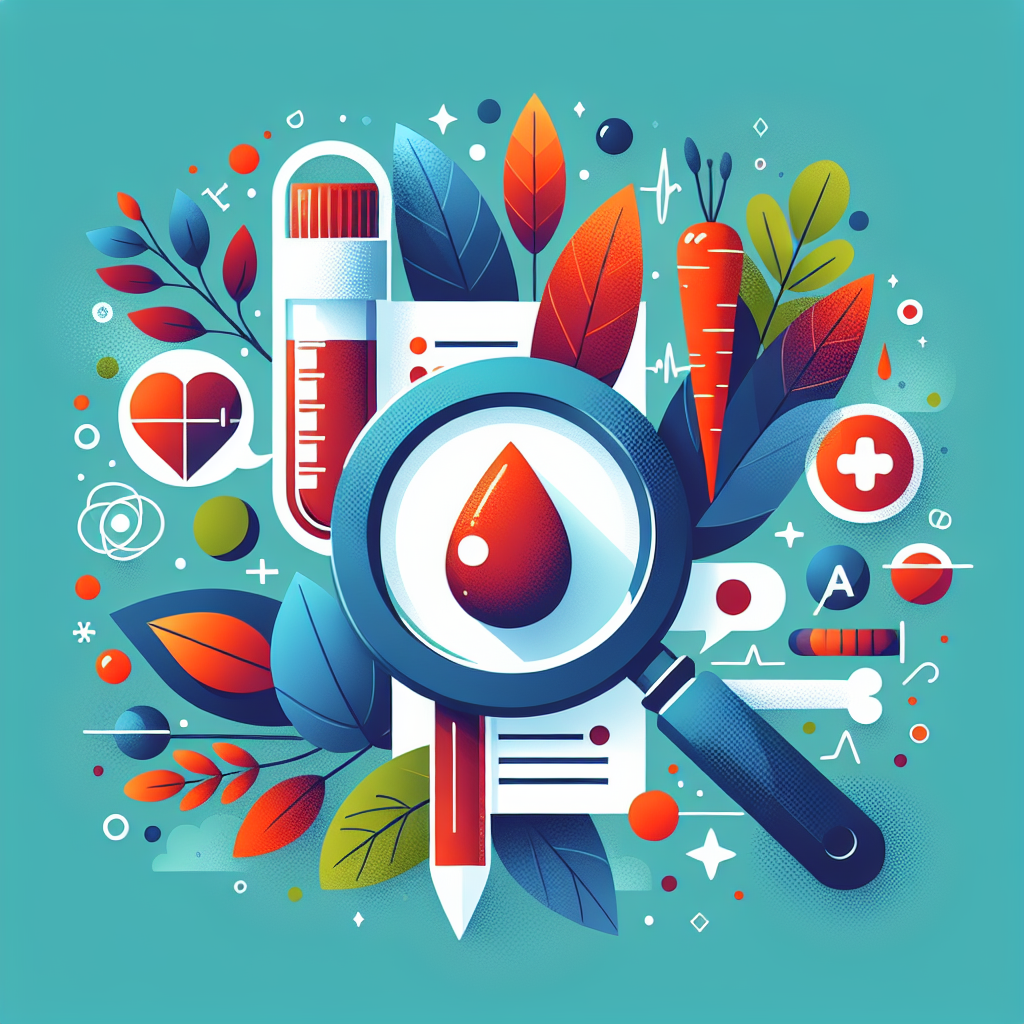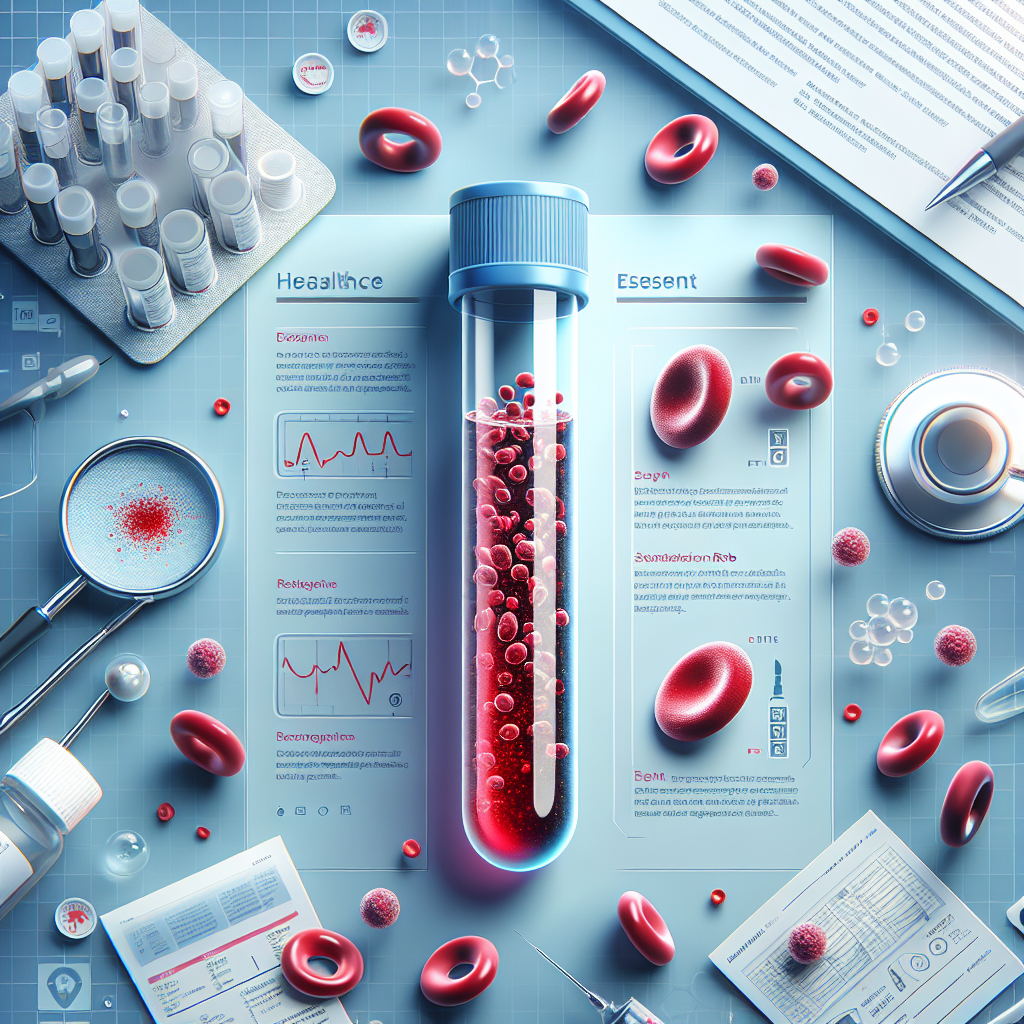Blood test results can often feel overwhelming, with complex terms and numbers that raise questions. One critical marker, 17-OH Progesterone, provides valuable insights into your hormonal health. This comprehensive guide explains what 17-OH Progesterone is, why it’s tested, how to interpret results, and what to do if your levels are abnormal. With this knowledge, you can have informed discussions with your healthcare provider and take control of your health.
What Is 17-OH Progesterone?
17-OH Progesterone, also referred to as 17-hydroxyprogesterone, is a steroid hormone produced by the body. It serves as a foundational component in the synthesis of other essential hormones, such as cortisol (which regulates stress and metabolism) and sex hormones (like testosterone and estrogen). Essentially, 17-OH is a vital piece in the body’s hormonal puzzle, ensuring the production of these critical substances runs smoothly.
Role and Production of 17-OHP in the Body
Where Is It Produced?
The adrenal glands, located just above the kidneys, and the gonads (ovaries in women and testes in men) are the primary sources of 17-OH Progesterone. Its production follows specific biological patterns. In women, levels fluctuate with the menstrual cycle, peaking during the luteal phase (post-ovulation). In men, 17-OHP levels remain relatively consistent but are equally important for maintaining hormonal balance.
Why Is It Important?
As a precursor hormone, 17-OH Progesterone is integral to producing cortisol and sex hormones. Without adequate levels, the body’s ability to manage stress, metabolism, and reproductive functions could be disrupted. Its role as an intermediary ensures the hormonal system operates in harmony, supporting overall health.
Why Is a 17-OHP Test Ordered?
A 17-OH blood test is used to evaluate the function of the adrenal glands and diagnose hormonal disorders. This test is particularly valuable for identifying conditions such as:
- Congenital Adrenal Hyperplasia (CAH): A genetic condition caused by enzyme deficiencies, leading to abnormal 17-OH Progesterone levels. Many countries screen newborns for CAH using this test.
- Polycystic Ovary Syndrome (PCOS): Some women with PCOS have elevated 17-OHP, aiding in diagnosis.
- Other disorders impacting reproduction, metabolism, or stress response.
By measuring 17-OHP, doctors can pinpoint imbalances and develop targeted treatment plans, making it a crucial tool in clinical practice.
How to Interpret Your 17-OH Progesterone Test Results
Reading the Lab Report
Your blood test report will list 17-OHP with a numerical value, typically in nanograms per milliliter (ng/mL) or nanomoles per liter (nmol/L). Next to this, you’ll find a reference range indicating “normal” values for your demographic. Some reports use symbols (like an asterisk) or color coding to highlight results outside the norm. For women, the report may specify the menstrual cycle day (e.g., Day 3 of the cycle), as this affects interpretation.
Understanding Reference Ranges
Reference ranges are established by analyzing 17-OHP levels in healthy populations. These ranges vary based on:
- Age and Sex: Levels differ between men, women, and children.
- Menstrual Cycle Phase: In women, 17-OH Progesterone fluctuates, with higher levels post-ovulation.
- Time of Day: Levels peak in the morning due to circadian rhythms.
- Lab Techniques: Different labs may use slightly different methods, affecting ranges.
To interpret your results, compare your 17-OH Progesterone value to the provided range, keeping your personal context (e.g., cycle phase or time of sample) in mind. Always consult a doctor for a thorough analysis.
What Causes Abnormal 17-OH Progesterone Levels?
Abnormal 17-OH Progesterone levels can signal various health conditions. It’s essential to avoid self-diagnosis and discuss results with a healthcare professional for accurate interpretation.
Elevated 17-OHP Levels
High 17-OH Progesterone levels are more commonly observed and may indicate:
Congenital Adrenal Hyperplasia (CAH)
The most frequent cause of elevated 17-OHP is CAH, a genetic disorder where enzyme deficiencies prevent the conversion of 17-OHP into cortisol, leading to its accumulation. Severe forms of CAH are often detected at birth, while milder, non-classic forms may cause symptoms like acne, excessive hair growth (hirsutism), irregular menstrual cycles, or infertility later in life. An ACTH stimulation test is commonly used to confirm a CAH diagnosis.
Other Causes of High Levels
Additional factors contributing to elevated 17-OHP include:
- Polycystic Ovary Syndrome (PCOS): Some women with PCOS show moderately high levels.
- Adrenal or Ovarian Tumors: Rare cases may cause significant elevations.
- Pregnancy: A natural increase in 17-OHP occurs during pregnancy.
- Medications: Certain drugs, such as corticosteroids, may influence levels.
Low 17-OH Progesterone Levels
Low 17-OH Progesterone levels are less common but may suggest:
- Adrenal Insufficiency: Conditions like Addison’s disease, where the adrenal glands underproduce hormones.
- Ovarian or Testicular Dysfunction: Impaired gonadal function can reduce 17-OHP
- Rare Enzyme Deficiencies: Specific genetic conditions may lower levels.
Symptoms of low 17-OHP may include chronic fatigue, muscle weakness, or low blood pressure. A comprehensive hormonal workup is needed to determine the underlying cause.
What to Do If Your 17-OH Progesterone Levels Are Abnormal
Monitoring Frequency
The follow-up plan depends on the degree of abnormality and the diagnosed condition. For mild elevations, testing every 6–12 months may suffice. For significant imbalances or conditions like CAH, more frequent monitoring (e.g., every 3 months) may be recommended by an endocrinologist to adjust treatment.
Lifestyle and Dietary Recommendations
Maintaining hormonal balance involves adopting healthy habits, such as:
- Eating a balanced diet rich in fruits, vegetables, lean proteins, and healthy fats (e.g., omega-3s).
- Engaging in regular, moderate physical activity to support metabolism.
- Practicing stress-reduction techniques like yoga or mindfulness.
- Prioritizing 7–8 hours of quality sleep nightly.
- Staying well-hydrated to support overall health.
While lifestyle changes alone cannot correct serious hormonal imbalances, they complement medical treatment and promote well-being.
When to Consult a Specialist
Seek medical advice from a doctor or endocrinologist if:
- Your 17-OHP levels are significantly outside the reference range.
- You experience symptoms like irregular periods, excessive hair growth, or extreme fatigue.
- You’re planning a pregnancy and have a history of abnormal 17-OHP levels.
- You notice warning signs like persistent low blood pressure or weakness.
For women, scheduling the test during the follicular phase (days 2–5 of the menstrual cycle) ensures more consistent and comparable results. Always note the date of your last menstrual period when providing a sample.
Frequently Asked Questions About 17-OH
Do Levels Vary Throughout the Day?
Yes, 17-OH Progesterone follows a circadian rhythm, with higher levels in the early morning. For the most accurate results, blood samples should be taken between 7 AM and 9 AM.
Can Medications Affect 17-OHP Results?
Certain medications, such as hormonal contraceptives or corticosteroids, can alter 17-OH Progesterone levels. Always inform your doctor and lab about any medications or supplements you’re taking before the test.
How Does Age Influence 17-OHP Levels?
17-OH Progesterone levels naturally vary with age. They peak during puberty, stabilize in adulthood, and gradually decline with aging, particularly during menopause in women. Reference ranges account for these age-related changes.
Why Is an ACTH Stimulation Test Needed If My Levels Are Normal?
Even if 17-OH Progesterone levels appear normal at rest, an ACTH stimulation test can detect subtle enzyme deficiencies, such as non-classic CAH. This test measures how your body responds to ACTH, a hormone that stimulates 17-OH Progesterone production.
Can Stress Affect 17-OH Results?
Acute stress has minimal impact on 17-OHP compared to cortisol. However, chronic stress may indirectly disrupt the hormonal system over time, potentially affecting multiple hormones, including 17-OHP.
How Are Levels Managed in Treated Non-Classic CAH?
For non-classic CAH, treatment aims to control symptoms rather than normalize 17-OH levels completely. An endocrinologist will adjust medications to achieve a balance that minimizes symptoms while avoiding side effects, with regular testing to monitor progress.
Additional resources
- To deepen your knowledge of this blood marker, Read more about 17-OH Progesterone.
- To extend your knowledge and decipher other markers, more articles are available here.
Confused by your blood test results?
Get instant clarity. Bloodsense interprets your blood test results online in minutes. Our secure platform translates complex medical data into an easy-to-understand report. Take control of your health today. Visit bloodsense.ai to get your personalized insights now.

